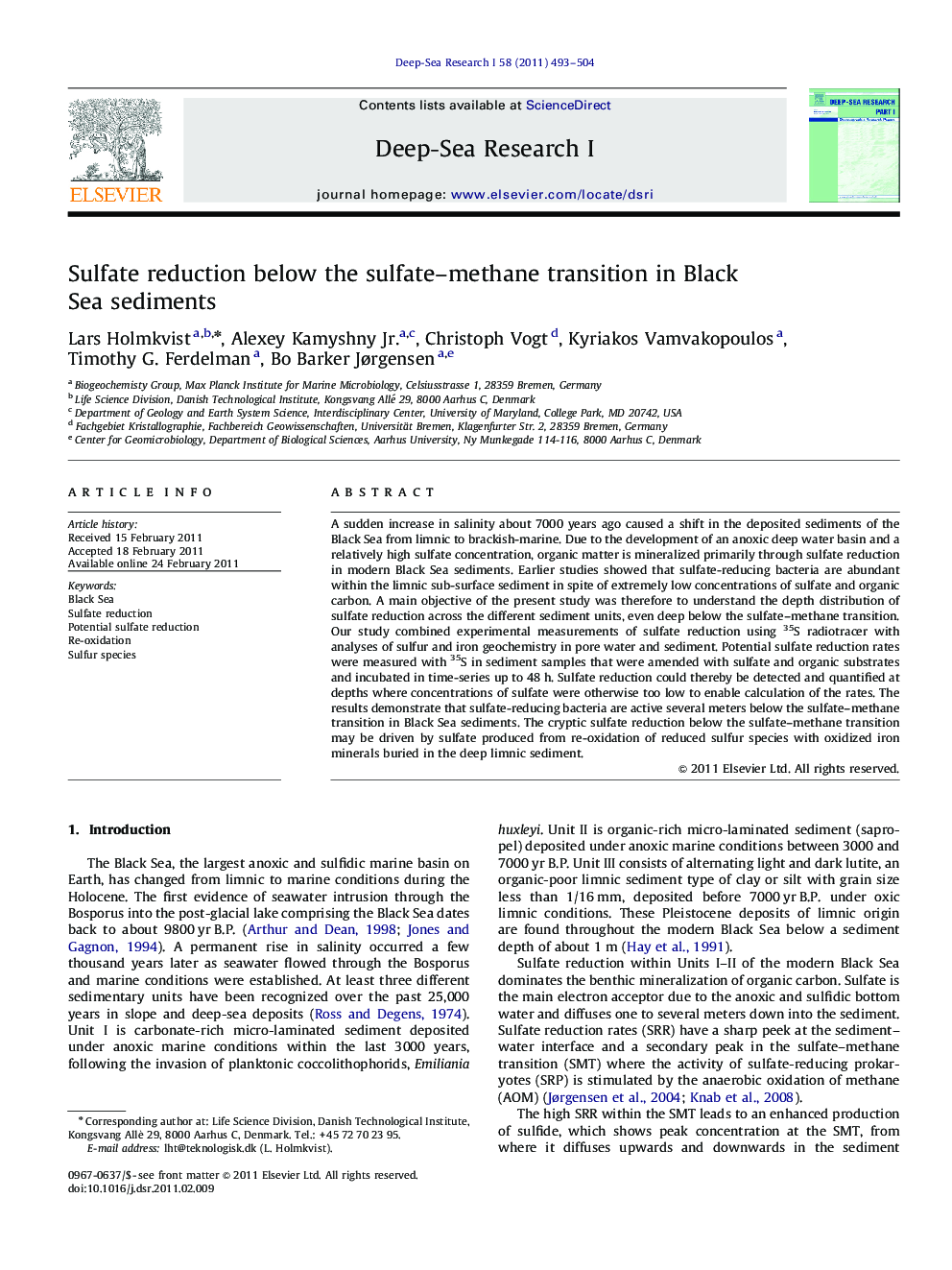| Article ID | Journal | Published Year | Pages | File Type |
|---|---|---|---|---|
| 4534813 | Deep Sea Research Part I: Oceanographic Research Papers | 2011 | 12 Pages |
A sudden increase in salinity about 7000 years ago caused a shift in the deposited sediments of the Black Sea from limnic to brackish-marine. Due to the development of an anoxic deep water basin and a relatively high sulfate concentration, organic matter is mineralized primarily through sulfate reduction in modern Black Sea sediments. Earlier studies showed that sulfate-reducing bacteria are abundant within the limnic sub-surface sediment in spite of extremely low concentrations of sulfate and organic carbon. A main objective of the present study was therefore to understand the depth distribution of sulfate reduction across the different sediment units, even deep below the sulfate–methane transition. Our study combined experimental measurements of sulfate reduction using 35S radiotracer with analyses of sulfur and iron geochemistry in pore water and sediment. Potential sulfate reduction rates were measured with 35S in sediment samples that were amended with sulfate and organic substrates and incubated in time-series up to 48 h. Sulfate reduction could thereby be detected and quantified at depths where concentrations of sulfate were otherwise too low to enable calculation of the rates. The results demonstrate that sulfate-reducing bacteria are active several meters below the sulfate–methane transition in Black Sea sediments. The cryptic sulfate reduction below the sulfate–methane transition may be driven by sulfate produced from re-oxidation of reduced sulfur species with oxidized iron minerals buried in the deep limnic sediment.
Research highlights► We have studied sulfate reduction across different sediment units of the Black Sea, even deep below the sulfate–methane transition. ► The results demonstrate that sulfate-reducing bacteria are active several meters below the sulfate–methane transition. ► A cryptic sulfate reduction below the sulfate–methane transition may be driven by sulfate produced from re-oxidation of reduced sulfur species with oxidized iron minerals buried in the deep limnic sediment.
